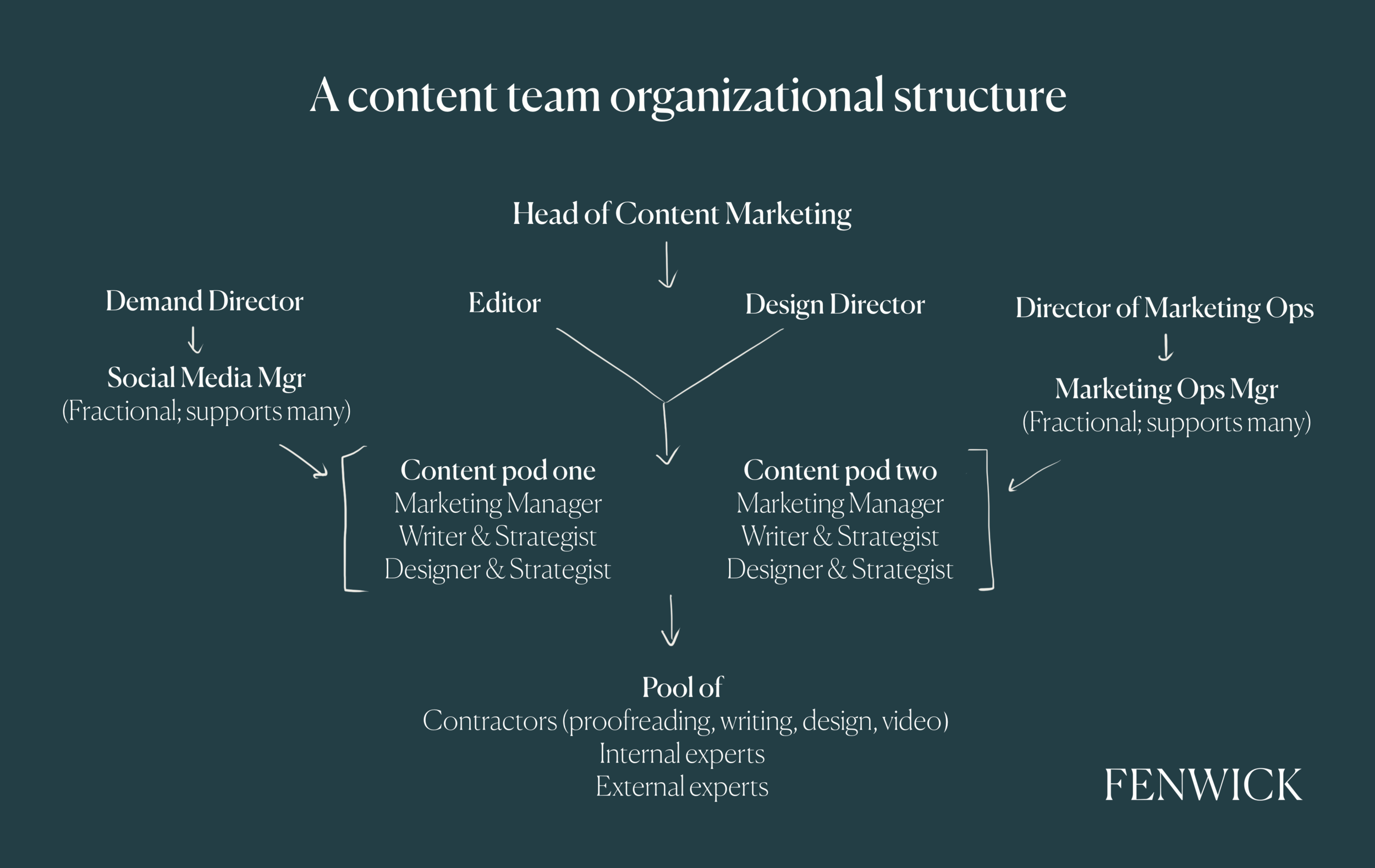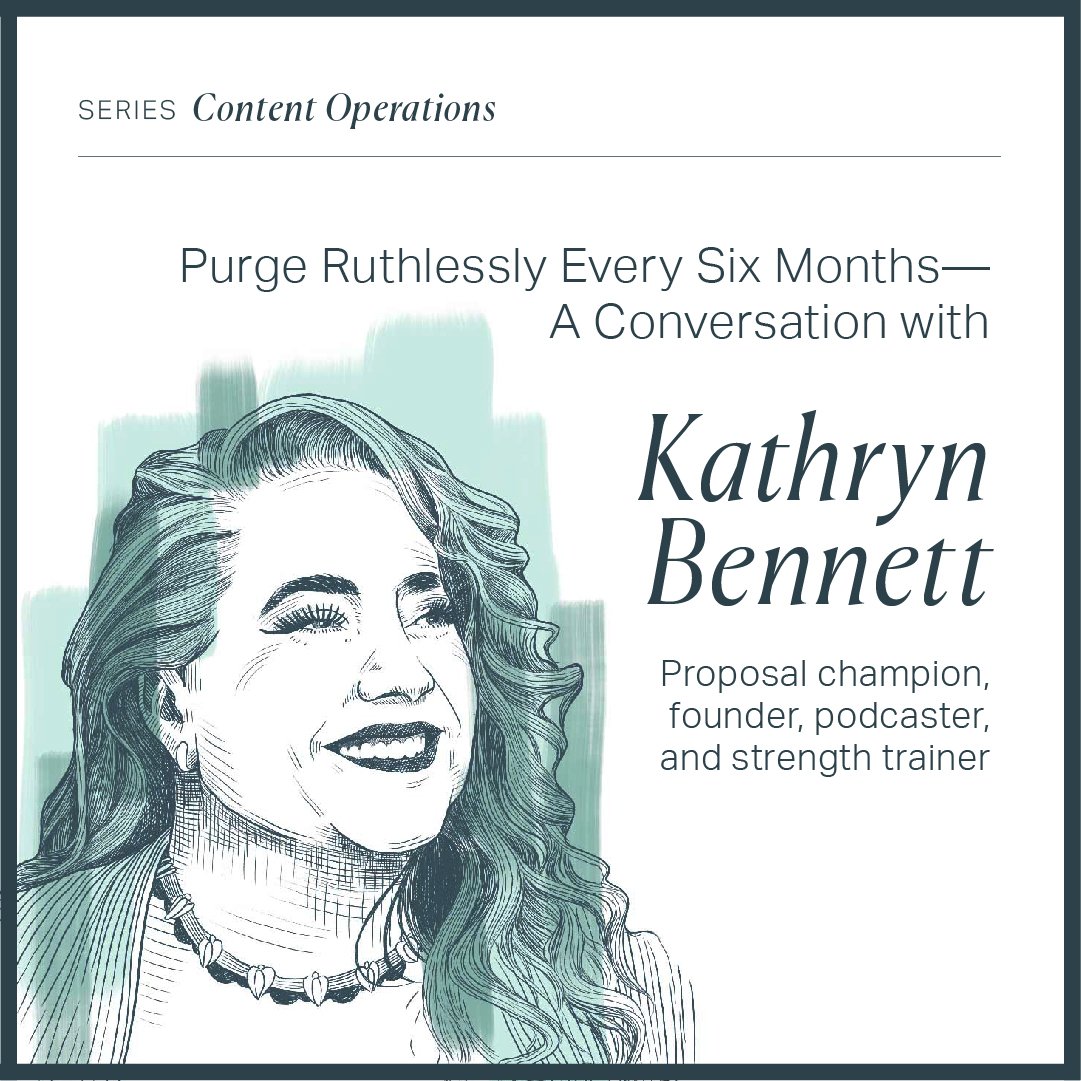Content Operations: The Invisible Scaffold You Can’t Live Without
The Mastery Project is a series where we dissect, study, and test a topic to produce rules for our writers and designers. When we learn something, we share.
1. The Key to Quality is scaffolding
Picture an old, medieval ruin. Affix your gaze upon the drawbridge and drag it upward, up the wall, up the flying buttresses and up past the crenulated defenses to the very highest tower and ask yourself this: How did a medieval, without the benefit a modern skycrane, drag those stones up so high?
The answer is scaffolding. They built a temporary structure to support that monument’s construction, and until it was finished, you actually couldn’t see even a fleck of stone, so covered in wooden planks and struts and ramps it was. But when they the peeled the scaffolding away, all that endured was the finished towering form—jutting from the landscape as if it had always been that way.
Good content operations work similarly. All anyone outside your team ever sees is the finished product—the ebook for example. They don’t see that latticed substructure of tasks, meetings, interviews, Google Docs, design files, and briefs that made it possible.
Scaffolds never get much credit.
In my experience, most teams underinvest in the content scaffolding because, well, that part just isn’t talked about. The operational bits go unmentioned. I have never seen a methodology for building one out, or an award for building a great one. But that scaffold is the key to success. Almost every time I hear someone say their content program is underperforming, I know this is their issue. Someone is trying to haul stones up a parapet by hand.
In this guide, I explore what I think goes into a good content operation based on six years of working closely with content teams, from five-person startups to 2,000-person companies. This article features an org chart, frameworks, and a plea—if you want your content investment to achieve great things, you must devote time to operations.
What IS A content operation?
A content operation is a collection of rules you agree on and enact to keep your content program trim and productive. It’s a structure—partly documented, partly in people’s minds—that everybody adheres to. There are four basic building blocks: people, documents, templates, and systems.
You need all four building blocks, otherwise, you’ll have one very unstable scaffold. That is, you need the right people because sound judgement and taste are paramount. You need documents because memories are fragile and records help you productively include others. You need templates because they save a tremendous amount of thinking, and you need systems (software) because if anything can be automated, it should be, to free yourself and your team to be creative.
No two content teams will have the exact same setup. But many will be similar.
Let’s go into those four pieces in detail:
1. People—you need a team of specialists bound by a common cause and mode of communication.
Each person’s role should be narrowly defined, which helps people focus, I find. But the role shouldn’t be so narrow that they lose touch with teammates. Fenwick has found a lot of success protecting our writers from operational or promotional duties like building emails (the role is narrow), but they still have a dual title of “Writer & Strategist” so they’re empowered to plan projects they themselves want to work on (not too narrow).
These are creative constraints that I believe foster excellence. Someone whose only job is to obsess over the uniqueness of ideas tends to find very, very good ideas, whereas someone weighed down with formatting emails and scheduling interviews will produce shallow writing. (Though as Fenwick’s Senior Writer & Strategist Riviera Lev-Aviv points out, there’s a limit to this thinking, as nobody’s ever going to answer your email for you.)
But ancient tower builders from Sumeria to the Han Empire understood this principle. Specialization was so important to project success that ancient stone masons formed secret societies to protect their trade secrets.
Ancient towers: Hwangnyongsa-ji, modern Korea, Galata, modern Istanbul, and Monastir, modern Tunisia.
You can think of each role in content as an archetype. Every team needs all four:*
Promoter—this person owns planning, chooses channels, and sets the schedule. They’re measured on revenue metrics like pipeline, leads, etc. Their customer is sales. Common titles include: Growth, marketing, demand generation.
Creator—this person writes or designs. They’re measured on subjective reactions to content, internally and externally, as well as on conversions from that content. Their customer is the buyer, customer, or prospect. Common titles include: Content marketer, writer, designer, producer.
Operator—this person is responsible for publishing, uploading, monitoring SEO, and measuring performance. They themselves are measured on operational metrics like response SLAs and on-time campaigns. (But never vanity metrics like number of tickets.) Their customer is the promoter. Common titles include: Marketing operations, project manager, creative producer.
Expert—this person is only responsible for ideas and advice as needed. Their customers are their friends and peers.
*If you know of an exception I’d love to hear.
2. Documents—you need a corpus of documents that explain three things: what you sell, who you sell to, and how to connect those two. (Or if you’re a content writer, or work at a studio or agency, you need a set of documents for each of your clients.) Common examples include:
Call recordings (buyers, customers, internal)
Brand and style guide (see Shopify’s)
Content matrix
Program or channel map
Roles and responsibilities
3. Templates—you need templates, meetings, and checklists that tell you what happens when, and who’s responsible. For instance, it helps to have a list of the order of operations for creating and publishing a blog post, or a handoff document from the web team telling others how to request a new landing page. Templates can include:
A cheat sheet for how to work with each team (for example, how to request design support)
Recurring events like stand ups or backlog meetings
You’ll want to collect all this somewhere like an internal wiki or Google Doc, but even more important, you’ll want to bake it into your project management tool. If you have a content production checklist, turn it into a task template. (How to do that in Asana.)
4. Systems—you’ll also need software tools that help you do the work. They include project management tools like Notion, Asana, or simply shared spreadsheets. At Fenwick, for each client, we aim to create or formalize some combination of:
A shared “bulletin” which links to all past, present, and future content
A content backlog where people add pitches and ideas
A stats, quotes, and anecdotes doc
A shared Google calendar
A template brief (and possibly several, for different types of content)
Request forms
A central content repository (Haha, yes I know. But it’d be nice)
Content analytics (Google Analytics, marketing automation, BI tool)
SEO planning tool
Content operations vary wildly by the size of the business. If you just read through the list above and laughed at the idea of “asking your web team” to do something, because you are also your own web team, you understand. Or if you’re seeing those four archetypes and realizing you are all four, I’d encourage you to think real hard about the probity of that.
The smaller your organization, the greater your opportunity to build this scaffolding from scratch, and do it right. At medium or larger companies, the status quo will probably limit you. Divisional silos have likely already calcified, as well as some territorialism and fence-tossing behavior. There may be a design team, a content (writing) team, a lifecycle marketing (email and web) team, a demand team, and an operations team that each report to a different leader and have different modes of working—as well as variable amounts of time to dedicate to content.
“Fenwick has found a lot of success protecting our writers from operational or promotional duties”
In this scenario, things will probably take much longer because small delays accumulate into lost days. The content also tends toward mediocrity because each person is incentivized to defend the goals of their particular niche, without understanding the asset’s place in the larger project. For example, the SEO specialist wanting to add awkward long-tail keywords at the cost of readability.
Wherever you have the opportunity, I recommend implementing what’s known as a pod structure (aka squad structure), where you gather several people with complementary skills from different teams and give them a specific goal or project. Even if everyone reports to a different manager, having them work in a content pod can bring the four archetypes into daily interaction and give everyone the gift of time to focus on making that pod’s output great.
No matter your size, building the key artifacts listed above such as personas, a bulletin, and checklists, is essential. If you never have time to document, you’re at the mercy of fate. For instance, will everyone on the team stick around? Will you be able to explain this to new hires? How will you involve partners? It also means you’re doomed to recreate things that already exist because you can’t find them when you need them.
I think of operations as getting what’s in your team’s heads into your digital systems where it can be organized and conveyed to keep your content organization trim and productive.
What happens if I ignore content operations?
You waste a lot of money and time. Just off the top of my head, I can think of three organizations we’ve worked with that took more than six months to produce a single report and not because they were waiting on us—because of internal disagreement on who should be involved, a lack of clarity on who owned the project, and an endless edit cycle because there was no rubric for “good” or “done.” (In the end, what got them to publish was simple fatigue. In all three cases, the finished product was less clear than the first draft, in my opinion.)
Had I told any of those organizations the report would take 24 weeks, they wouldn’t have hired us. And had I told them they’d be the ones responsible for that delay, they probably wouldn't have believed me. (And might have been offended.) But such was the reality, and the cost of dysfunctional content operations—or a complete lack thereof.
According to somewhat dated research by Kapost, B2B marketers spend roughly $5.2 billion annually on content marketing, and one-fifth of that—18.5%—is considered wasted. That’s $958 million spent on ideas that went nowhere, or assets that didn’t perform, or PDF ebooks that were produced at great cost but never launched.
An analogy
To ignore content operations is to also seriously degrade the work lives of all involved. When, as is often the case, you saddle everyone with as many as seven different roles, you wear them thin and gain little. People feel frazzled, are dispirited by an ever-growing backlog of duties, and have to context-switch until their brain is mush. I’ve been there. That’s a mental space from which it becomes impossible to do good work.
Bad operations also scare away new talent. Applicants will read what your stressed team is publishing, and think twice. And your existing creators won’t love being shackled to tangential responsibilities, weighed down by unnecessary review cycles, and doomed to write things that never see print.
If you see yourself and your team pouring all your effort into content and yet the resulting blog or ebook series is, by your own admission, dull, you’re probably in this state.
How do I implement content operations at my company?
The above list of items is a lot, and it’s not something you knock out all at once. Nor will simply creating those documents lead to success. What matters is that people use them. Recall our earlier definition of content operations: “It’s a structure—partly documented, partly in people’s minds—that everybody adheres to.”
The key is adherence. Anyone can decide on rules for their content operation. The real challenge is activating those rules in your software systems, and convincing others to follow them. And of course the truest test: getting employees to teach these methods to others. This is where I find most B2B content teams flounder. They publish a style guide that’s never seen again. They announce a new editing process that is quickly abandoned, or they create a spreadsheet for statistics that no one ever references.
You can think about launching operations in two overlapping and complementary phases, which in my experience, tend to move in rhythmic cycles:
Figuring out what you want
Enforcing what you want
Maybe you don’t yet know what you want from your content operation. No problem, these artifacts are much more easily discovered than invented, by which I mean, you often don’t know what’s needed until you try. I recommend simply starting with what you have. All the problems will make themselves manifest.
“This is where I find most B2B content teams flounder. They publish a style guide that’s never seen again. They announce a new editing process that is quickly abandoned, or they create a spreadsheet for statistics that no one ever references. ”
For instance, it’s only by trying to assign and track projects via email that you learn the utter necessity of having a project management software, much less the specific requirements you have for one—like assignable subtasks or custom fields.
Over time, document as you go. You’ll face an issue, dream up a fix, document it, implement it, fail, and try something else. Think of yourself as an eccentric inventor who cheerfully makes 1,000 unsuccessful attempts before inventing, say, the light bulb. When things work, you record them as knowledge. You build the scaffold layer by layer until one day, you’ve gathered a structure that’s proven to work.
If you were to implement things in stages, this is how I’d think about it:
Early phase: Bamboo and rope
Draw a map of your content operations today. (Paper and pen, PowerPoint, or Figma are all great.) On that map, add teams (and team members) involved in content, your channels, and your content formats. What connects each of these items? In those spaces, list any documents, checklists, meetings, etc. that exist or should exist. Any blank spaces are areas you’ll want to investigate.
Publish a content mission (which you’ll improve later).
Create a content bulletin or Kanban board.
Create a content backlog and start holding periodic backlog meetings.
Create a style notes guide (a sort of proto-style guide that’s just a checklist).
Basic customer research—conduct five interviews.
Begin measuring content engagement metrics (views, downloads, opens, clicks).
Middle phase: Wood and pulleys
Refine your content mission and get everyone involved to agree to and sign it.
Publish workflows and checklists.
Find a project management tool that everyone likes and make your workflows check-off-able.
More clearly define everyone’s roles, shedding unnecessary formats, channels, and responsibilities so they can focus on doing fewer things better. You can start by asking each person, “What do you wish you could do more of? Do less of?”
Conduct intensive customer research: personas with plenty of direct quotes, customer research with the raw interviews, and win/loss analyses as a deck that people can easily peruse.
Build a full brand and style guide.
Begin measuring funnel metrics and pipeline generation (MQLs, conversions, pipeline, revenue).
Late phase: Cantilevered steel lattice and crane
Create a content matrix.
Document aggressively and test those documents.
Launch a content operations role and have them own all the systems (they can begin as a fractional teammate).
Create new hire onboarding materials.
Start using content metrics to inform the content backlog and your program (attribution, recommendations).
Begin publishing your content operations artifacts as “published,” share with other teams, and periodically update them.
The diagram below is how I might organize that team. Whether you’re big or small, I still recommend a pod (or squad) structure. That way, if you have more hands, you can simply build more pods and add supporting roles in proportion. Seven content pods will get much more done than four siloed teams with an equal number of people. Plus, you can encourage each pod to specialize, to some people’s profound delight.
An organizational structure for a content team. The marketing manager reports to the demand director.
What happens through these phases is you’ll probably learn a lot about what does and doesn’t work. You’ll change, you’ll adapt, you’ll refine, you’ll retract, and eventually you’ll land on the right way to deploy content operations for your organization. That’s how you’ll learn to quickly assemble scaffolding that allows you to leave behind impressive artifacts.
Stop hauling stones and start scaffolding
If I can leave you convinced of one thing, I hope it’s that the scaffolding that supports your content is just as important as the actual act of creation. Teams that don’t get this right become mired in publishing average ideas. In the vast expanse of B2B media, they are background noise, and much of their content investment is wasted.
For people who want to build towers, the secret is clear: Spend more of your time—and a lot of it upfront—constructing your scaffolding. Likely nobody will ever see your internal style guide, bulletin, or checked-off lists. But they will see its effects. And for years thereafter, new readers will marvel at that PDF ebook and wonder, “How on earth did someone build that?”
Want to improve your own content operations? Download Fenwick’s Bulletin & Backlog template, make a copy, and give it a try. If you use Asana, Notion, or similar, turn it into a Kanban board there.
Hear how experts apply these ideas
Want to keep in touch? We publish a twice-monthly newsletter about writing craft.










